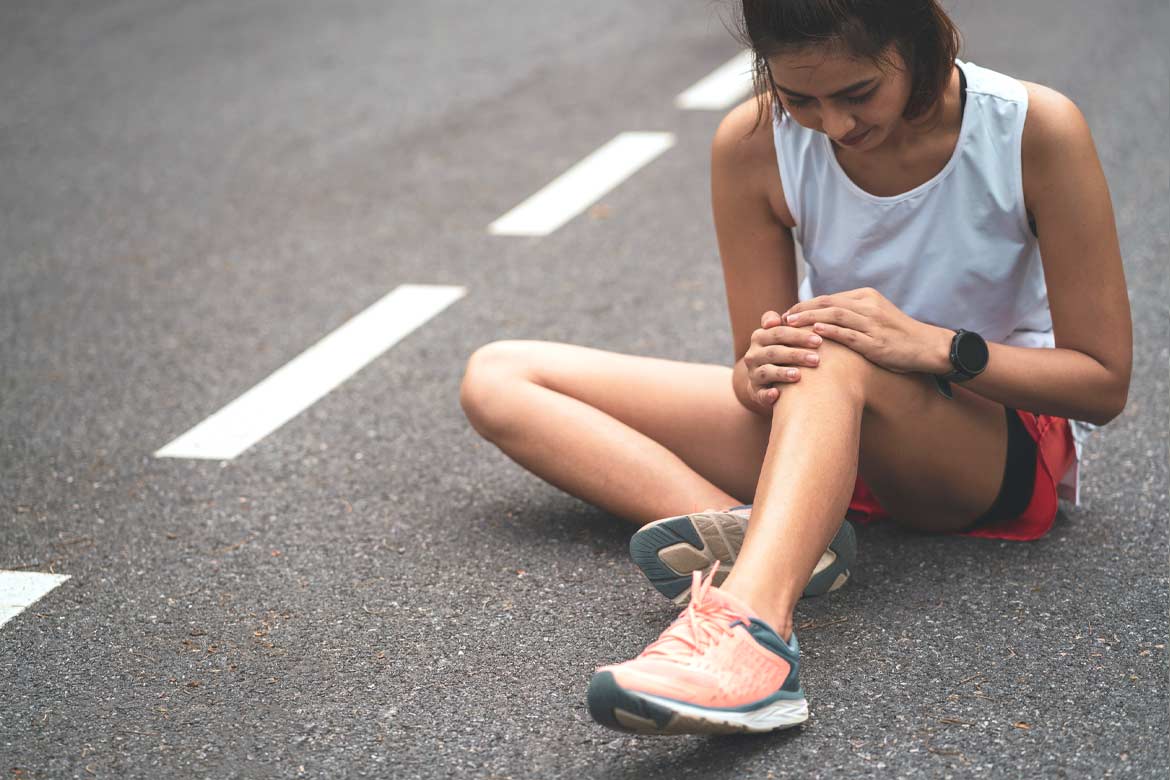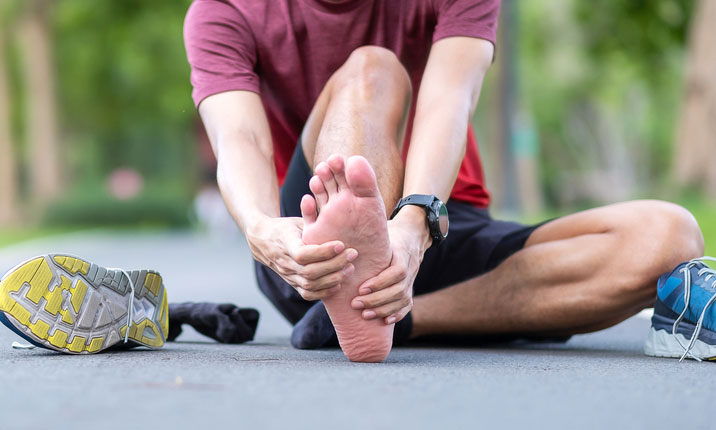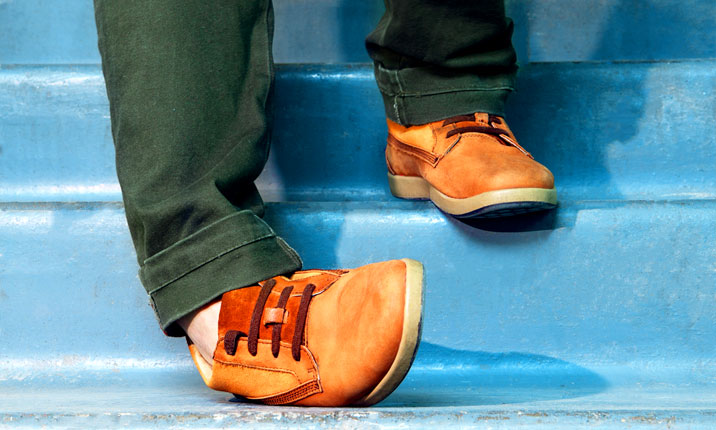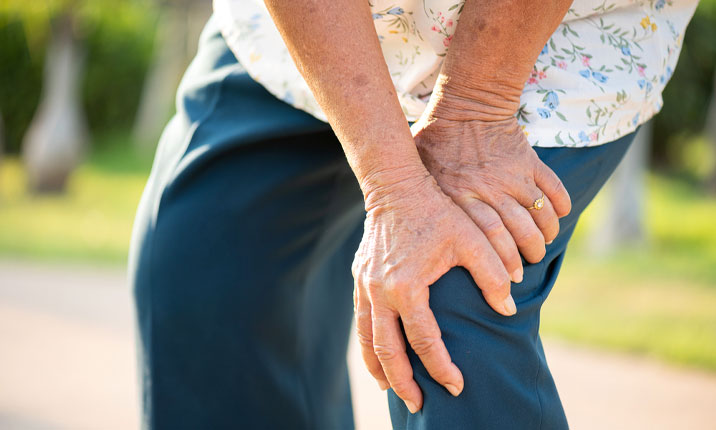
Common Lower Limb Orthopaedic Conditions | Health Plus
17 Mar 2022
In this first instalment of a 2-part series, we go through some commonly experienced lower body joint conditions, and explore the causes, symptoms and available treatments for them.
Did you know that sprains, strains and other bodily pains are some of the many musculoskeletal conditions that doctors see in their clinics? Among the most common of these musculoskeletal conditions are ankle sprains, shoulder injuries, wrist and finger conditions, as well as pain in the knee or foot.
Read on to learn more about some common lower limb conditions that you may have experienced, and their causes, symptoms, and available treatments.
Plantar Fasciitis (Heel Pain)

Heel pain (or plantar fasciitis) occurs when the band of tissue on the soles of your feet, which connects your heel to your toes (also known as the plantar fascia), becomes inflamed. This inflammation is what causes the pain that is experienced. Plantar fasciitis can be caused by having too much pressure being placed on the heel of our feet, resulting in damage to the tissue.
Signs and symptoms
The most common sign of plantar fasciitis is pain in the heel. This is usually most intense when taking those first few steps in the morning, or after a prolonged period of rest, such as when getting out of a car.
Risk factors
Plantar fasciitis may show up in people who experience the following:
- Have existing foot conditions such as a high arch, or tight calf muscles
- Start new activities such as brisk walking and running
- Have sudden increases in weight, or in persons who are overweight or obese
- Wear inappropriate footwear with insufficient heel support, especially when engaging in high-impact activities
Diagnosis
To diagnose plantar fasciitis, your doctor may suggest for an X-ray of your foot. The presence of a heel spur, a calcium deposit on the underside of the heel bone, is typically indicative of plantar fasciitis.
Treatment
Your doctor may suggest various different ways of managing plantar fasciitis, most of which can be carried out conveniently at home.
- Rest: Avoiding or reducing activity that aggravates the pain can allow the plantar fascia to heal.
- Weight loss: If you are overweight, gradual weight loss can help to reduce the impact borne by the heel.
- Painkillers: A short course of oral painkillers, such as non-steroidal anti-inflammatory drugs (NSAIDs), can be taken as a form of temporary pain relief.
- Ice: Rolling a cold can or bottle under your foot for 15 – 20 minutes, 3 – 4 times a day, can help relieve symptoms.
- Supportive footwear: Footwear with adequate heel support can help ease impact on the heel. If the symptoms are present even at home, wearing simple footwear at home may help relieve the symptoms.
- Exercise: As plantar fasciitis can be made worse by tight muscles in your calves and feet, regular stretching exercises can help with pain relief:
Calf stretches
Lean forward and push both your hands, with arms extended, onto the wall. Take a lunge position, with one leg in front and knees bent and feel the pull in your calf during the stretch. Hold the position for 10 seconds and relax. Repeat this exercise 20 times for each foot.
Plantar fascia stretch
In a seated position, cross your affected leg over the other. With the affected leg’s knee bent, grasp the toes of the painful foot and slowly pull them upwards until you feel a stretch in your calf. You may also try wrapping a towel around your affected foot and pulling it towards you. Hold the stretch for 10 seconds and repeat it 20 times for each foot. You should do this exercise first thing in the morning, or after a long period of sitting or resting.
In serious cases where the pain does not go away despite home treatments, other treatments that may be recommended include cortisone injections to the foot, or even shockwave therapy.
Ankle Sprains and Strains

Ankle sprains happen when the ligaments in our ankle get stretched beyond their limits and tear. This can be caused when our ankles get rolled or twisted awkwardly while walking on uneven ground, or when we fall. Ankle strains can also occur in the same manner. The difference between an ankle sprain and strain is that the former involves injury to ligaments, while the latter involves injury to muscles or tendons. Both conditions have similar symptoms.
Signs and symptoms
Pain over the ankle is a telltale sign of injury. The affected ankle may also swell up and be painful to touch. Following the injury, ankle movement may be restricted and you may feel unstable when walking.
Risk factors
Common risk factors for ankle sprains and strains include:
- Not warming up before a vigorous activity
- Inappropriate footwear, such as wearing low-cut shoes without adequate ankle support instead of high-cut shoes designed for support when playing sports such as basketball
- Obesity, as excess weight places a greater load on our joints when we walk, run and jump
Diagnosis
Your doctor will first examine the affected area gently to check for extent of injury. They may rotate the ankle gently to ascertain the site of injury and pain. If necessary, an X-ray of the ankle may be ordered to rule out a fracture.
Following the physical examination, your doctor will grade the severity of the sprain according to the severity of ligament damage. Grade 1 ankle sprains involve mild injury while Grade 3 ankle sprains may potentially cause permanent instability. Ankle sprain grades help determine what treatment is necessary.
Treatment
In milder sprains, the doctor will usually recommend Rest, Ice, Compression and Elevation (RICE) treatment at home in the first 2 – 3 days following an injury.
- Rest – Resting the ankle reduces the inflammation and allows the ligaments to heal. Crutches may be needed if the affected ankle is unable to bear weight.
- Ice – Applying an ice pack to the ankle for 10 – 15 minutes, for 3 times a day, helps reduce inflammation and swelling.
- Compression – A compression bandage may be applied to reduce ankle movement and support the joint. In serious sprains, an ankle brace in the form of a cast-boot or leg cast may be recommended.
- Elevation – Raising the affected ankle above heart level when resting can help in reducing swelling.
- Medication – NSAIDs or painkillers may also be prescribed to relieve inflammation and pain.
Generally, the time taken to recover from an ankle sprain will range from 3 weeks to 6 months. After an ankle sprain heals, physical therapy exercises may be recommended to strengthen the ankle and prevent another injury. Surgical treatment is uncommon and reserved for patients with persistent ankle instability that does not respond to conservative treatment.
Osteoarthritis of the Knee

Osteoarthritis is a degenerative joint disease that typically occurs in the hands, hips and knees. Osteoarthritis of the knee is usually caused by wear and tear or degeneration of the cartilage in the knee joint, and can cause knee pain once the knee loses this natural protection.
Signs and symptoms
The knee may feel swollen and stiff. Pain will also be experienced with everyday physical activity, such as walking or climbing the stairs. Creaking in the knees, sometimes with sound, may also be experienced with movement. In severe cases, the pain may prevent you from going about your normal daily activities.
Risk factors
The risk of developing osteoarthritis of the knee is higher if you are:
- Older in age, as osteoarthritis tends to occur in older adults
- Obese, as excess weight increases stress placed on weight-bearing joints such as your knees
- Placing repeated stress on your knees by engaging in certain activities or sports such as soccer and running
Diagnosis
Your doctor will gently feel the knee joint and check for pain. The range of motion, flexion and extension of the knee may be tested. If necessary, an X-ray will be ordered . Other tests, such as magnetic resonance imaging (MRI) or computerised tomography (CT) scans, may be also recommended to determine the condition of the knee in greater detail.
Treatment
The following treatments may be prescribed for osteoarthritis of the knee:
- Activity modification
Minimise activities which cause pain, such as climbing stairs. You may also be asked to reduce high-impact activities or sports, such as jogging or tennis, and switch to lower-impact activities such as swimming and cycling instead. - Weight loss
Losing weight can help to reduce the impact on the joints, especially if you are overweight.; - Physical therapy
A physical therapy program may be recommended by your doctor to help strengthen the muscles around the knee and in the leg. Alternatively, doing gentle and low-impact knee osteoarthritis exercises such as calf stretches, hamstring stretches and side heel raises can help strengthen your knee muscles and maintain overall joint mobility. - Pain relief
Your doctor may prescribe painkillers or NSAIDs for pain relief. - Walking aids
Walking aids such as shoe inserts, braces, splints, crutches and canes can help to reduce the impact on the affected knee. The walking aid should be customised to suit your needs. - Injections
Corticosteroid injections into the joint may provide short term relief. Alternatively, you may consider hyaluronate injections into the knee joint in a procedure called viscosupplementation, which lubricates the joint to facilitate movement and reduce pain. - Surgery
Surgery, such as knee arthroplasty (knee replacement), may be recommended in severe cases of osteoarthritis, or when the pain from the condition has a severe impact on the quality of your daily life.
Article contributed by Dr Wong Pei Ying, family physician at Parkway Shenton's in-house corporate clinic
References
American Family Physician. (2002). How to care for your ankle sprain. Am Fam Physician, 66(8), 1517–1518.
Ansorge, R. (2020, August 28). Heel Spurs and Plantar Fasciitis. WebMD. Retrieved on 22/2/2022 from https://www.webmd.com/pain-management/heel-spurs-pain-causes-symptoms-treatments.
Centers for Disease Control and Prevention. (2020, July 27). Osteoarthritis (OA). Centers for Disease Control and Prevention. Retrieved on 22/2/2022 from https://www.cdc.gov/arthritis/basics/osteoarthritis.htm.
Haddad, S. L. (2016, February). Sprained Ankle. OrthoInfo. Retrieved on 22/2/2022 from https://orthoinfo.aaos.org/en/diseases--conditions/sprained-ankle/.
Holland, K. (2017, March 20). Is It a Sprain or a Strain? Tips for Identification. Healthline. Retrieved on 22/2/2022 from https://www.healthline.com/health/sprain-vs-strain.
Lindberg, S. (2021, March 11). How long does it take for a sprained ankle to heal? Healthline. Retrieved on 22/2/2022 from https://www.healthline.com/health/how-long-does-it-take-for-a-sprained-ankle-to-heal.
Liow, Y., Wang, W., & Loh, V. (2017). Outpatient management of knee osteoarthritis. Singapore Medical Journal, 58(10), 580–584. https://doi.org/10.11622/smedj.2017097
Mayo Foundation for Medical Education and Research. (2019, December 11). Plantar fasciitis. Mayo Clinic. Retrieved on 22/2/2022 from https://www.mayoclinic.org/diseases-conditions/plantar-fasciitis/symptoms-causes/syc-20354846.
Mayo Foundation for Medical Education and Research. (2021, April 27). Sprained ankle. Mayo Clinic. Retrieved on 22/2/2022 from https://www.mayoclinic.org/diseases-conditions/sprained-ankle/symptoms-causes/syc-20353225.
Orenstein, B. W. (2018, November 26). 8 Assistive Devices for People With Knee Osteoarthritis. Everyday Health. https://www.everydayhealth.com/hs/osteoarthritis/knee-osteoarthritis-assistive-devices/.
Trojian, T., & Tucker, A. K. (2019, June 15). Plantar Fasciitis. American family physician, 99(12), 744–750.
Vandever, L. (2019, March 7). Easy exercises for knee arthritis. Healthline. Retrieved on 22/2/2022 from https://www.healthline.com/health/osteoarthritis/easy-excercises-knee.
Wheeler, T. (2020, February 18). Knee Osteoarthritis Exercises. WebMD. Retrieved on 22/2/2022 from https://www.webmd.com/osteoarthritis/ss/slideshow-knee-exercises.




